Dak Lak, a province in the Central Highlands of Vietnam, stands as an enchanting testament to nature's beauty and cultural richness. From sprawling lush landscapes to cascading waterfalls and vibrant ethnic communities, this region draws travelers seeking authentic experiences and breathtaking sights. Known as the coffee capital of Vietnam, Dak Lak is not just about its aromatic brews, but also boasts of stunning natural wonders, rich traditions, and some of the country's most significant cultural heritage. Whether you’re looking to immerse yourself in local customs, witness the grandeur of nature, or tantalize your taste buds with aromatic coffee, Dak Lak’s attractions promise an unforgettable journey.
Nestled between valleys and rolling hills, Dak Lak resonates with a charm that feels both historical and dynamic. The province is a treasure chest of breathtaking views and cultural encounters that leave a lasting imprint on anyone who explores it. This guide unveils the unmissable attractions, highlighting natural wonders such as the breathtaking Dray Nur and Dray Sap waterfalls, the serene Lak Lake, and the magnificent Yok Don National Park. Furthermore, it delves into encounters with ethnic villages and UNESCO-recognized heritage, showcasing Dak Lak’s rich tapestry of culture, history, and adventure.
In Dak Lak, the landscape is not just a backdrop; it is an integral part of the culture and identity of the region. The dramatic formations of mountains paired with lush green valleys create a stunning canvas that is awe-inspiring. From the powerful waterfalls that cascade over ancient basalt cliffs to the tranquil lakes that mirror the sky, the natural wonders of Dak Lak offer visitors moments of serenity and exhilaration. Each natural site tells a story, conveying the history and the vibrant living culture of the local communities intertwined with their surroundings.
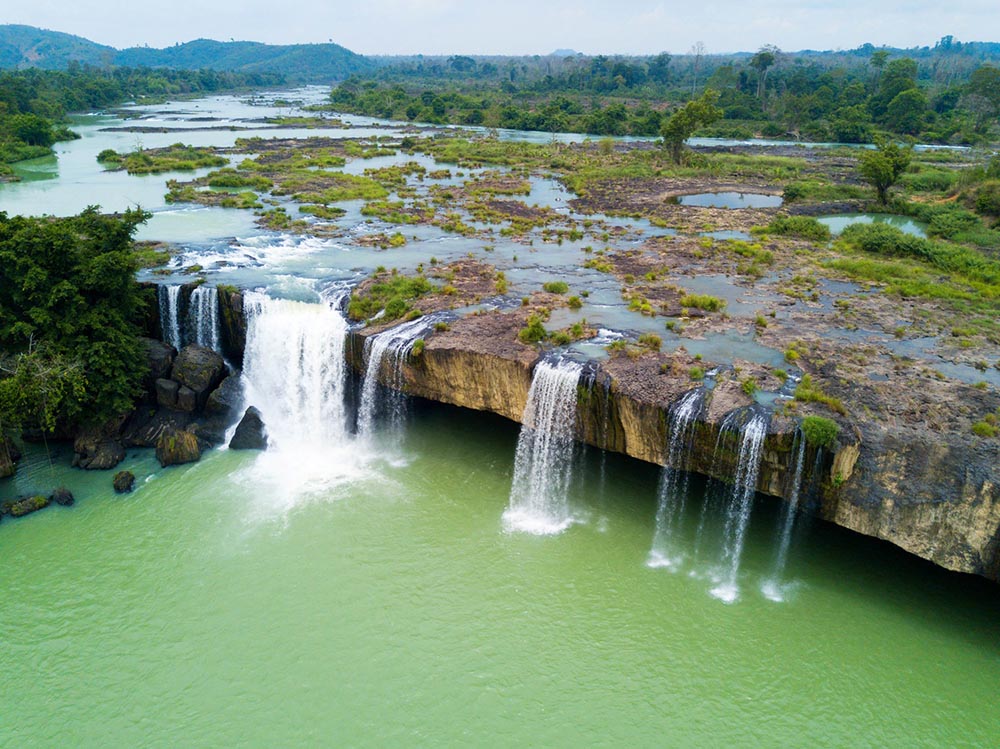
Dray Nur and Dray Sap waterfalls are arguably the most iconic natural wonders in Dak Lak. Located in close proximity to each other, these waterfalls are remarkable not just for their beauty but for the legends that surround them.
Dray Sap Waterfall: Often referred to as the "Smoky Waterfall," Dray Sap is located approximately 30 kilometers from Buon Ma Thuot city in Dak Nong province. This enchanting waterfall, standing about 10 meters tall and spanning a width of over 250 meters, plunges into the Serepok River. The refreshing mist that rises as the water crashes down gives this waterfall its smoky name an image that captivates photographers and nature lovers alike. The surrounding area is adorned with basalt rock formations stemming from ancient volcanic activity, rendering the landscape even more unique.
Legends and Cultural Significance: Dray Sap carries a deeply rooted story of eternal love. The tale of a couple from rival families who chose to be together at the cost of their lives is intertwined with the waterfall's presence. As the story goes, the river splits into two branches, creating Dray Sap and Dray Nur waterfalls, symbolizing their undying love. Such legends add a mystical aura that enriches visitors' experiences, making each visit feel profoundly personal.
Visitor Experience: Reaching the waterfalls is relatively easy, with numerous hiking trails that allow visitors to soak in the rich biodiversity and stunning vistas. Both waterfalls are ideal for picnicking and relaxing, particularly during the dry season from December to March. The lush greenery surrounding the waterfalls invites nature lovers to explore and engage with the environment.
| Attribute | Dray Sap Waterfall | Dray Nur Waterfall |
|---|---|---|
| Height | 10 meters | 30 meters |
| Width | 250 meters | Varies |
| Location | Dak Nong Province | Krong Ana District |
| Accessibility | 30 km from Buon Ma Thuot | 25 km from Buon Ma Thuot |
| Activities | Hiking, Picnicking | Swimming, Photography |
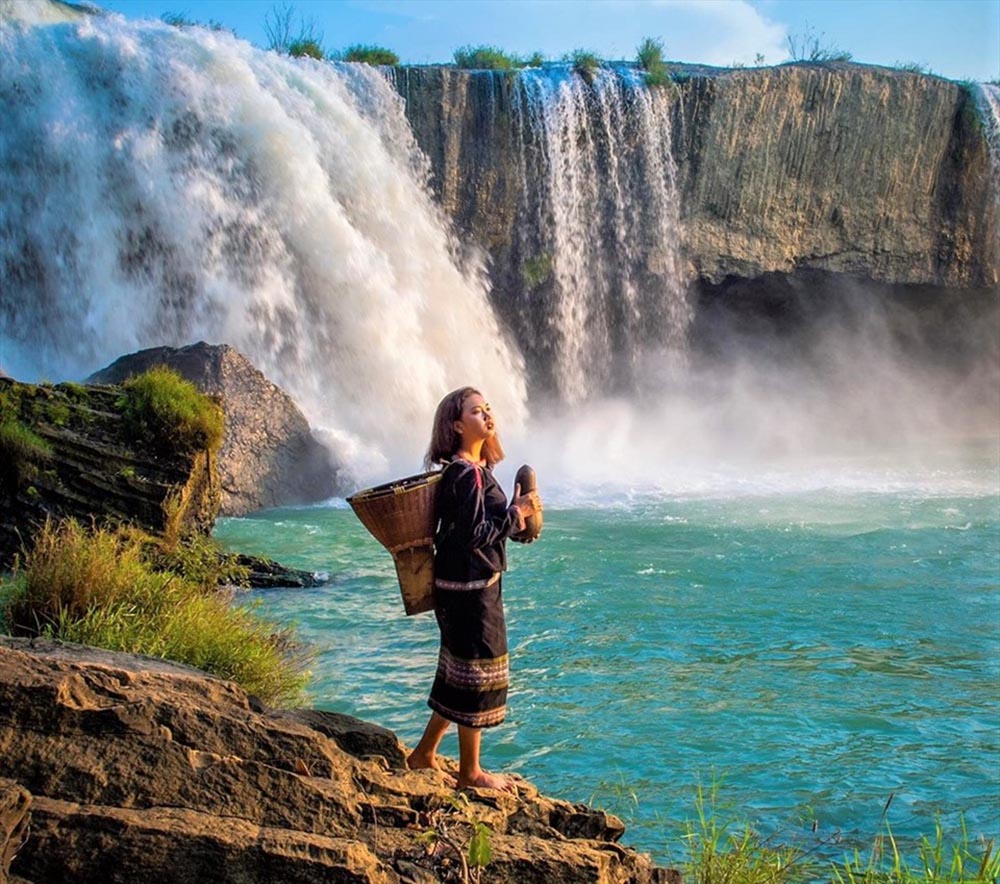
Lak Lake, the largest natural lake in the Central Highlands, stands as a serene gem amid the rugged hills of Dak Lak. Spanning approximately 5.5 square kilometers, the lake is surrounded by lush forests and picturesque landscapes, making it a coveted retreat for both locals and tourists seeking adventure and tranquility.
Boating and Canoeing: One of the most popular activities at Lak Lake is boating, where visitors can rent traditional wooden boats to drift across the calm waters. This serene experience provides a perfect vantage point to appreciate the stunning scenery and spot local wildlife. Canoeing and kayaking are also options, perfect for those looking for a bit more adventure on the water.
Cultural Interactions: The lake is home to the Mnong ethnic people, who have lived by its shores for generations. Tourists often engage with the locals, who share vibrant stories about their traditional lifestyle, crafts, and agricultural practices. Visitors can witness local rituals and partake in cultural performances, grounding their experience in authentic local culture.
Activities at a Glance:
| Activities | Description |
|---|---|
| Boating | Rent boats to explore the lake's expanse. |
| Fishing | Engage in fishing from traditional boats. |
| Elephant Riding | Ride elephants for a unique experience. |
| Cultural Interactions | Engage with the Mnong people and their customs. |
| Camping & Trekking | Trails offer views; camping sites enhance outdoor experience. |
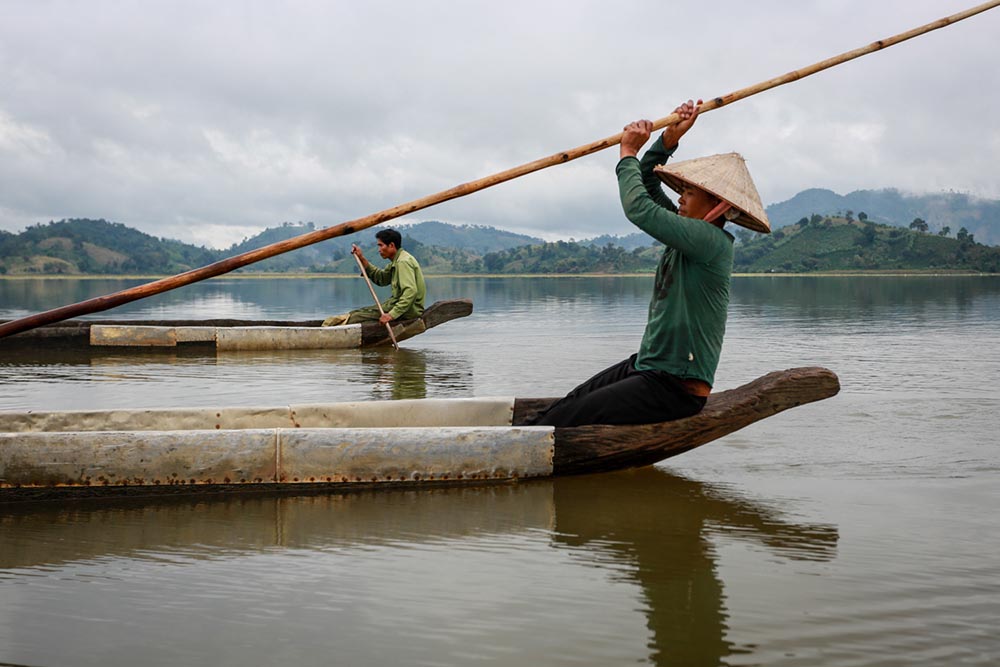
Yok Don National Park stretches across 115,000 hectares, making it one of the largest national parks in Vietnam. Situated near the Cambodian border, this haven of biodiversity is a must-visit for nature lovers and adventure seekers alike.
Biodiversity: The park is a sanctuary for diverse flora and fauna, home to over 850 tree species and 300 bird species, alongside numerous mammals and reptiles, some of which are endangered. Yok Don is particularly known for its populations of Asian elephants, deer, and rare bird species, creating incredible opportunities for wildlife observation.
Eco-tourism: Visitors can embark on guided trekking tours that explore various ecosystems within the park. Early mornings present the perfect opportunity for birdwatching, where enthusiasts can spot unique avian species. The park also offers designated camping areas, ensuring that guests can enjoy immersive experiences surrounded by nature.
Cultural Engagement: Encountering local ethnic groups such as the Mnong enhances the experience further, allowing tourists to learn about traditional lifestyles harmonized with nature. Engaging with these communities enriches the understanding of cultural heritage, nature’s influence on daily life, and local conservation efforts.
| Features | Details |
|---|---|
| Size | 115,000 hectares |
| Flora & Fauna | Over 850 tree species; 300 bird species; endangered wildlife |
| Activities | Trekking, camping, birdwatching |
| Community Interaction | Engage with Mnong people |
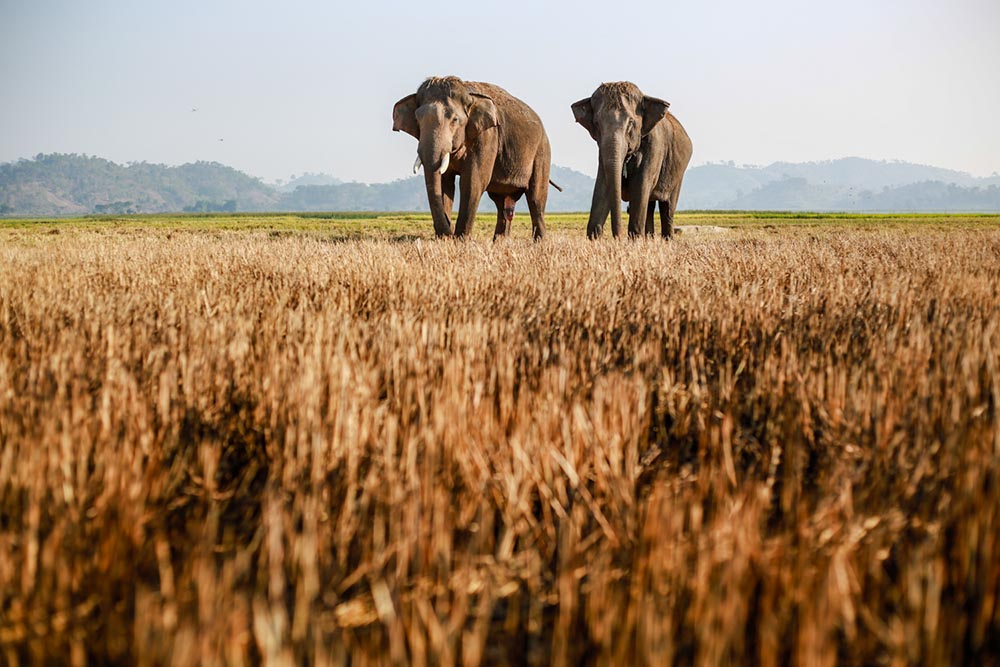
The natural wonders of Dak Lak, such as the Dray Nur and Dray Sap waterfalls, Lak Lake, and Yok Don National Park, showcase the inherent beauty and cultural significance that the province holds. Each location offers a glimpse into the harmonious relationship between the people of Dak Lak and their environment a narrative of love, resilience, and adventure.
The cultural experiences in Dak Lak are as rich and diverse as the landscapes, offering travelers a meaningful glimpse into the vibrant traditions of its ethnic communities. Visiting the various ethnic villages, such as those of the Mnong, Ede, and Jarai peoples, allows for engaging encounters with their unique customs, lifestyles, and artistry. Each community has its own distinct heritage that contributes to the broader cultural tapestry of Dak Lak, creating opportunities for immersive experiences that resonate with authenticity and warmth.
Exploring the ethnic villages of the Mnong, Ede, and Jarai peoples offers travelers an enriching cultural adventure. Each community has preserved unique practices, customs, and festivities that reflect their long-standing interactions with the land around them.
Mnong Culture: The Mnong people are renowned for their rich folklore, traditional music, and agricultural practices. They celebrate various festivals, such as the buffalo sacrifice festival, which honors ancestral spirits and expresses gratitude for bountiful harvests. Visitors can witness spectacular performances of the epic “Ot NRong" a narrative of their history celebrating the values they hold dear.
Ede Culture: The Ede community is known for their iconic stilt houses, which exemplify their adaptation to the mountainous terrain. Their cultural practices, including ceremonial rituals, highlight community bonding and agricultural transitions. The Ede also highly value the significance of gongs in celebrations and everyday life, making their festivals vibrant and joyful.
Jarai Traditions: The Jarai people further embellish Dak Lak’s cultural scene with their intricate rituals focused on ancestor worship. Visitors can delve into their unique crafts, including traditional weaving and wood carving, often showcased at local markets and during cultural celebrations.
| Ethnic Group | Cultural Highlights | Festivals Celebrated |
|---|---|---|
| Mnong | Epic performances; elephant rituals | Buffalo sacrifice; rice festival |
| Ede | Stilt house architecture; gong culture | Harvest festivals; community ceremonies |
| Jarai | Ancestor worship; traditional crafts | Ceremonies for the dead |
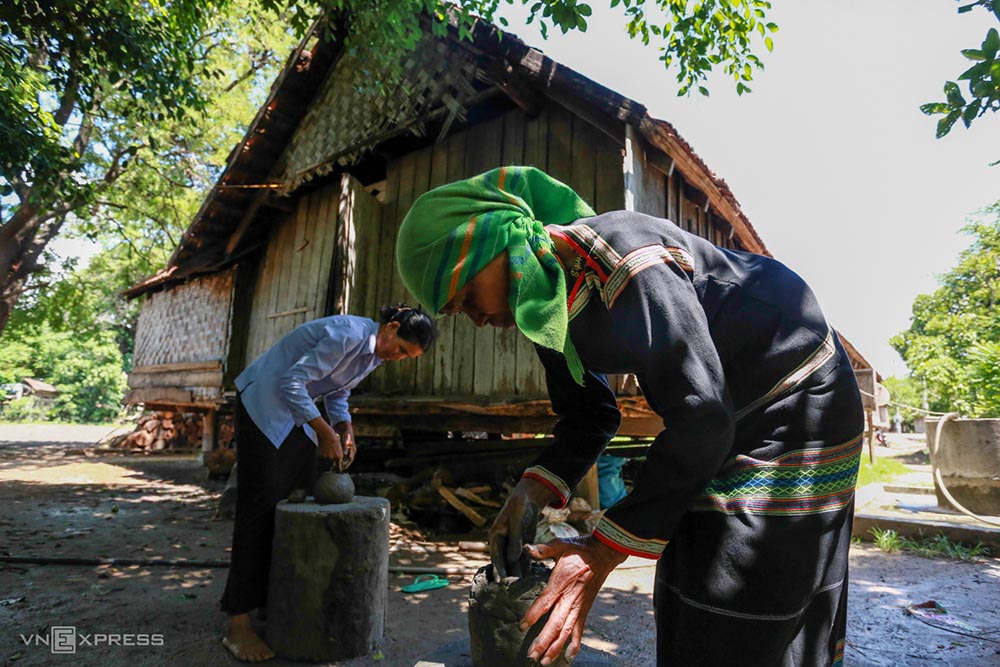
The Space of Gong Culture, recognized by UNESCO as an Intangible Cultural Heritage of Humanity, underscores the importance of gongs in the social fabric of Dak Lak. Gongs serve not merely as musical instruments but as crucial aspects of various cultural rituals and ceremonies.
Cultural Significance: Gongs are intricately woven into the daily lives of the ethnic communities in Dak Lak, acting as a medium of communication during significant events such as weddings, funerals, and festivals. Their sounds carry deep cultural messages, and their presence is felt strongly during communal gatherings.
Celebratory Context: Local festivals often showcase traditional gong performances, mesmerizing visitors with the rhythmic sounds that echo the resilience of a community rooted in tradition. These performances serve to honor deities and mark significant occasions, reinforcing the communal spirit and the cultural identity of the various ethnic groups.
Promoting Cultural Tourism: The recognition of the gong culture by UNESCO has augmented cultural tourism in Dak Lak, prompting visitors to seek out performances and participate in cultural exchanges with local people. Engaging in traditional music sessions instills a deeper appreciation for the heritage and stories of the Dak Lak province.
| Aspect | Details |
|---|---|
| Heritage Status | UNESCO Intangible Cultural Heritage |
| Social Role | Medium of communication in events |
| Tourism Impact | Engaging performances that attract visitors |
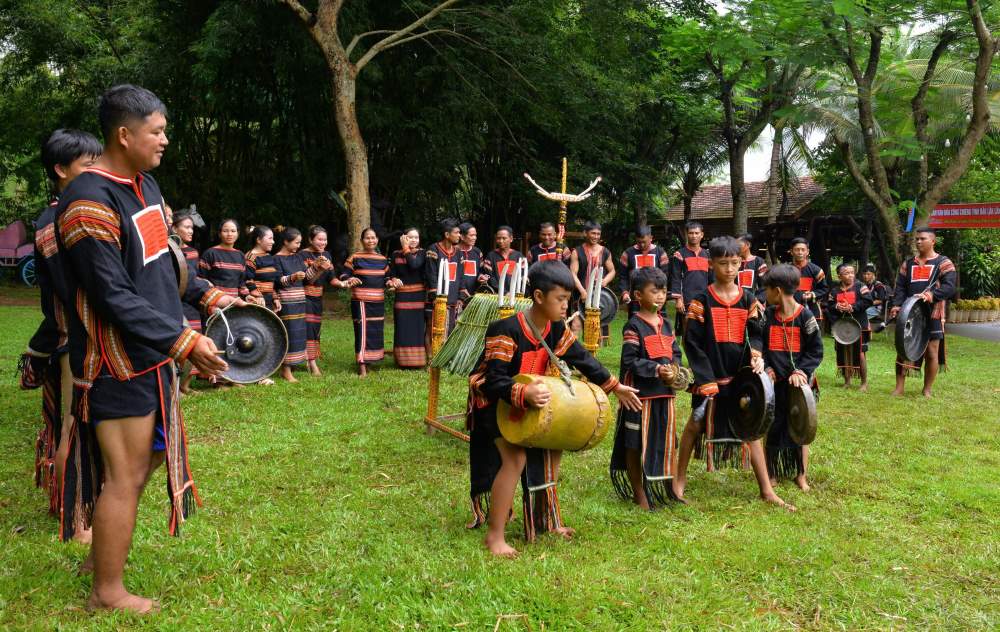
Buon Ma Thuot, the heart of Vietnam's coffee culture, provides visitors with an opportunity to explore the aromatic world of coffee production and the rich traditions that accompany it. As the largest coffee-producing region in Vietnam, the blend of culture and farming practices makes it an ideal destination for coffee lovers.
Coffee Farms: Visitors can dive into the coffee production process by touring local farms, where they can witness firsthand the meticulous care that goes into cultivating coffee plants, from seed to harvest. Engaging with local farmers allows for an understanding of traditional cultivation methods and the significance of coffee in local economies.
Tasting Experiences: Coffee-tasting sessions offer a sensory journey through various flavors and brewing techniques. Local brews, such as “cà phê sữa đá” (iced coffee with condensed milk), are must-tries for anyone wishing to experience Buon Ma Thuot’s coffee culture fully.
Cultural Importance: Coffee is not just an agricultural product; it signifies community bonding and represents the cultural identity of the region. The rituals surrounding coffee preparation reflect local customs and family traditions that have persisted through generations.
| Coffee Experience | Description |
|---|---|
| Farm Tours | Explore traditional coffee cultivation |
| Tasting Sessions | Sample various local coffee blends |
| Cultural Significance | Understand the role of coffee in local culture |
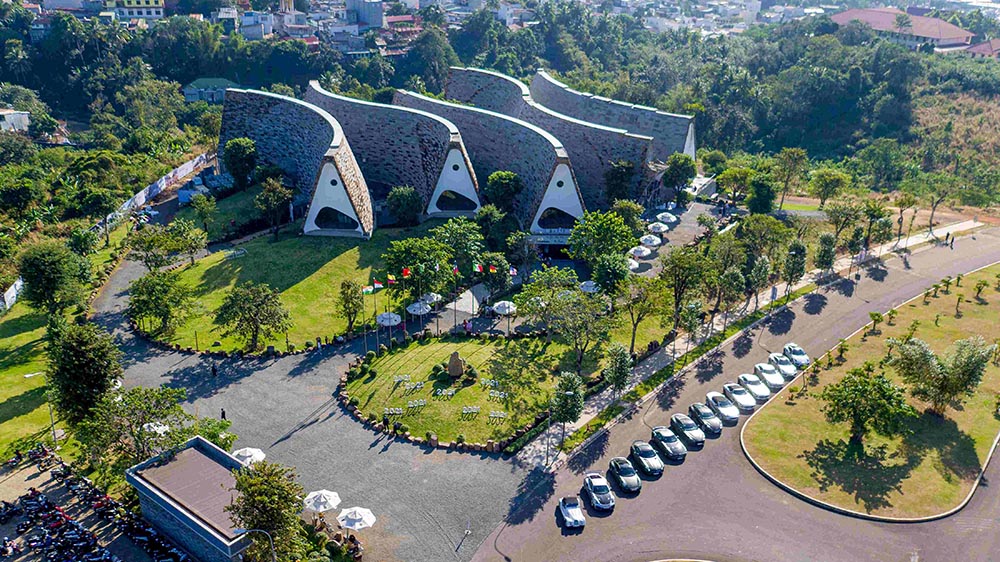
As much as Dak Lak is celebrated for its allure in nature and culture, it equally resonates with historical significance through its architectural and colonial landmarks. These sites foster a deeper understanding of Vietnam’s past, reflecting influences from various eras and events that have shaped the region's identity.
The Bao Dai Palace, particularly the Bao Dai Summer Palace, stands as a historical icon in Dak Lak. Constructed in the 1930s for the last emperor of Vietnam, Bao Dai, the palace represents the architectural elegance of its time and tells the story of Vietnam’s imperial history.
Architectural Design: The palace showcases a blend of French colonial and Vietnamese architectural styles. Its elegant design features spacious rooms, terracotta roofing, and beautifully landscaped gardens adorned with decorative elements that reflect the era's luxurious lifestyle.
Historical Significance: Beyond its architectural beauty, the palace served as a summer retreat for the emperor and hosted many important state functions. Its transformation into a museum today allows visitors to gain insights into the daily life of royalty and the socio-political landscape of Vietnam during a tumultuous period.
Visitor Engagement: Touring the Bao Dai Palace provides a unique opportunity to walk through history, with detailed exhibits displaying preserved artifacts and personal items belonging to the emperor’s family. The serene gardens surrounding the palace allow for moments of reflection amidst the historical narratives.
| Aspect | Details |
|---|---|
| Year Constructed | 1930s |
| Architectural Style | Blending of French and Vietnamese styles |
| Museum Experience | Insights into royal life and history |
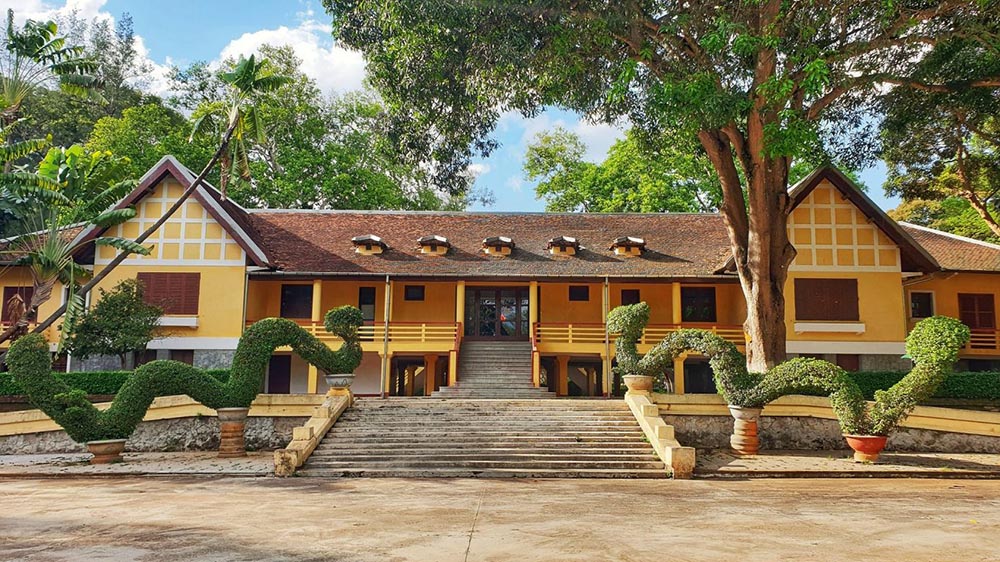
The Sacred Heart Cathedral, known as Buôn Ma Thuột Cathedral, is a significant religious and architectural landmark in the area. Its construction began in 1957 and was completed in 1958, making it a pivotal space for cultural and religious practices in Dak Lak.
Architectural Style: Built in the European Gothic style, this cathedral is characterized by its striking design that stands in contrast to the traditional Vietnamese temples common in the area. Capable of accommodating approximately 1,200 worshippers, it serves as a center for the local Catholic community.
Cultural Evolution: The cathedral symbolizes the spread of Catholicism in the region, reflecting the historical developments aligned with the colonial period. Its presence is indicative of the diverse cultural tapestry thatDak Lak holds, accommodating various religious practices.
Visitor Attractions: Visitors to Buôn Ma Thuột Cathedral can explore its stunning architecture and take part in religious services. The warm atmosphere and sense of community further enrich the experience while providing a reflective space amid bustling city life.
| Feature | Description |
|---|---|
| Construction Year | 1958 |
| Architectural Style | European Gothic |
| Community Significance | Center for local Catholic practices |
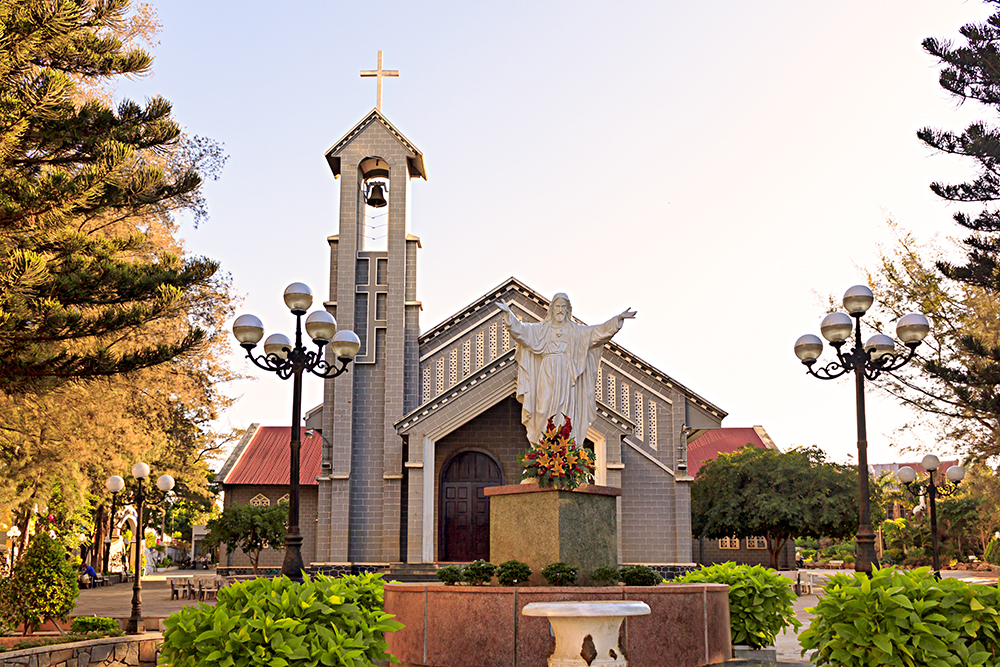
Dak Lak is not just a place for cultural immersion and natural beauty; it is also brimming with exhilarating adventure opportunities. From elephant tours to trekking in pristine parks, visitors can engage in a myriad of activities that cater to every adventurer’s desire.
Don Village, adjacent to Yok Don National Park, is renowned for its traditional elephant rides and ethical tourism practices that prioritize the well-being of these magnificent animals. Engaging in an elephant tour provides an extraordinary experience where travelers can appreciate the connection between humans and elephants in the Central Highlands.
Ethical Elephant Experiences: Visitors can partake in responsible interactions with elephants, allowing for bathing and feeding sessions that prioritize the animals' health. This sustainable approach emphasizes conservation while enabling visitors to appreciate the cultural significance of elephants in local traditions.
Wildlife Observation: Some tours focus on observing local elephants in their natural habitats, encouraging participants to trail into the forests for an educational experience. This approach enriches understanding not only of elephants’ role in local customs but also of the biodiversity in the region.
Cultural Context: Many elephant tour experiences are woven into the cultural narratives of the ethnic communities, allowing visitors to understand the historical and economic relationships that have developed over generations.
| Tour Activity | Description |
|---|---|
| Elephant Bathing | Hands-on experiences ensuring animal health |
| Wildlife Observation | Guided tours to observe elephants in nature |
| Cultural Narratives | Insights into local traditions and customs |
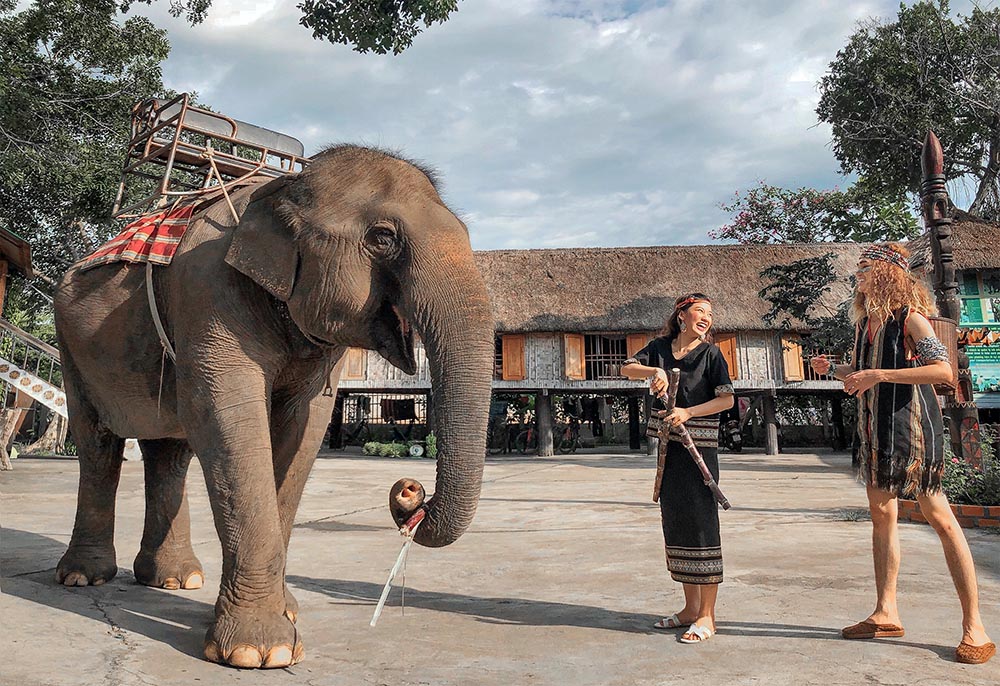
For adventure seekers, Yok Don National Park offers extensive opportunities for trekking and camping amidst breathtaking landscapes and diverse ecosystems.
Guided Treks: Professional guides lead various trekking excursions that introduce participants to the flora and fauna unique to the park. Trails vary in length and difficulty, accommodating both novices and seasoned trekkers seeking to immerse themselves in the wilderness.
Camping Opportunities: Overnight camping trips enable adventurers to fully embrace the natural beauty of the park. These experiences often include setting up tents in breathtaking locations and sharing stories by the campfire under starlit skies.
Cultural Integration: Many trekking tours combine visits to local ethnic villages, providing opportunities for cultural exchanges. Travelers can learn about traditional lifestyles and witness firsthand the harmonious coexistence of the communities with nature.
| Activity | Details |
|---|---|
| Trekking | Varied trails catering to all skill levels |
| Camping | Overnight stays in picturesque settings |
| Community Engagement | Integrating visits to local villages |
The vibrancy of Dak Lak extends beyond its natural and cultural scenery, with a calendar filled with festivals that celebrate its heritage and traditions. Key events draw locals and tourists alike, showcasing the richness of Dak Lak's cultural identity and community spirit.
The Buon Ma Thuot Coffee Festival is an outstanding event that takes place biennially, attracting numerous visitors keen to explore the province's deep-rooted coffee culture.
Cultural Significance: The festival celebrates Dak Lak’s status as Vietnam's coffee capital and showcases the traditions and innovations surrounding coffee production. It aims to enhance the connection between local communities and the global coffee market.
Festival Highlights: Activities during the event include workshops on coffee farming techniques, cultural exhibitions, and traditional performances that highlight the local heritage related to coffee. The event also features competitions, engaging the community in celebrating their craft and creativity.
Tourist Involvement: Visitors can engage in various activities, from tasting locally produced coffee to purchasing unique coffee products that represent Dak Lak’s agricultural excellence. This festival not only promotes local businesses but also emphasizes sustainable coffee practices.
| Festival Aspects | Description |
|---|---|
| Theme | Dak Lak: Destination of World Coffee |
| Activities | Workshops, exhibitions, competitions |
| Community Engagement | Promoting local coffee culture |
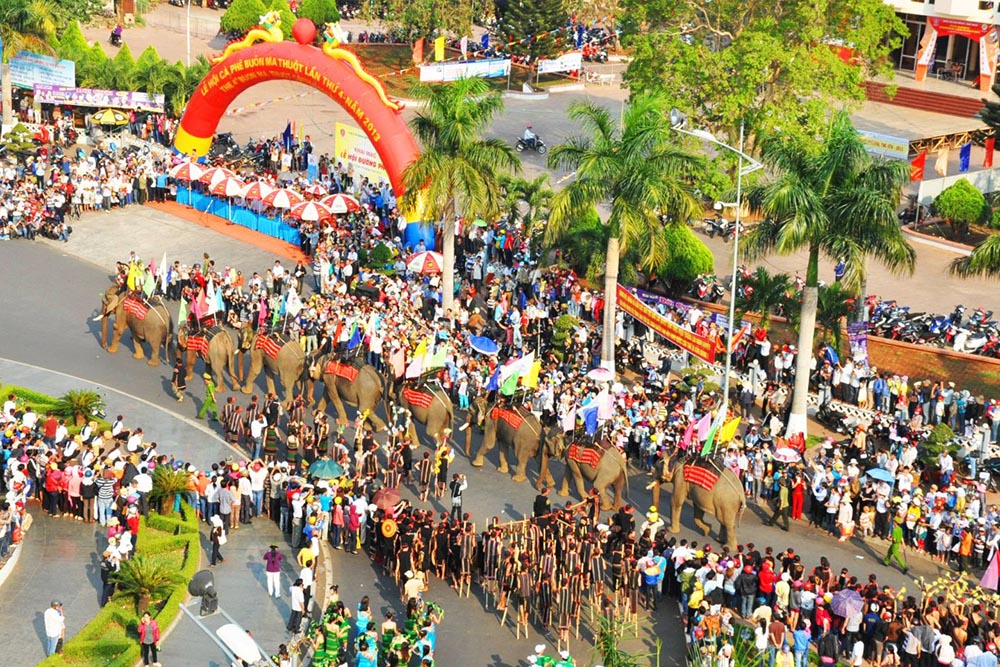
The Elephant Race Festival stands as one of the most vibrant cultural events in Dak Lak, particularly in Don Village. Celebrated biennially, this festival is a testament to the strong bond between the local communities and elephants.
Traditional Timing and Activities: Typically held in March, the festival marks the beginning of the cultivation season. Activities include thrilling elephant races, showcasing the intelligence and training of these amazing animals. Spectators cheer as elephants navigate a specially designed track, fostering a lively atmosphere.
Cultural Elements: In addition to races, the festival features other engaging events, including tug-of-war matches and swimming races involving elephants. The festive spirit is further enhanced by traditional music and dance performances, creating a comprehensive cultural celebration.
Shift Toward Sustainable Practices: In recent years, there has been a growing emphasis on the welfare of elephants, encouraging festivities that prioritize their health. This shift is instrumental in promoting ethical tourism while retaining the essence of the cultural celebration.
| Festival Features | Details |
|---|---|
| Timing | Biennially in March |
| Main Activities | Elephant races, tug-of-war, swimming |
| Community Focus | Emphasizing cultural identity and ethics |
In conclusion, Dak Lak is an enchanting province that offers a wealth of attractions ranging from stunning natural landscapes to vibrant cultural experiences. From the majestic cascades of Dray Nur and Dray Sap waterfalls to the sun-soaked shores of Lak Lake and the cultural echoes in its ethnic villages, every corner of Dak Lak invites exploration and appreciation. The rich heritage reflected in the festivals and historical sites allows visitors to connect deeply with the local traditions and stories that have shaped this region. Whether it’s indulging in the traditional coffee culture, celebrating during vibrant festivals, or engaging with the warm-hearted local communities, Dak Lak guarantees an unforgettable experience to cherish. Visiting this province not only enriches one’s journey through Vietnam but also fosters a greater understanding and admiration for its diverse cultural landscape.